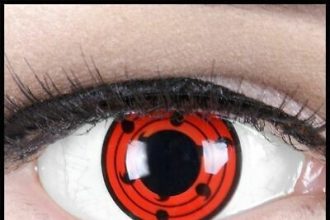Key Takeaways
- Injection molding is a versatile manufacturing process that enables rapid prototyping and production, making it ideal for meeting tight deadlines.
- The process offers fast cycle times, which can significantly accelerate production schedules.
- Automation in injection molding enhances efficiency, reduces labor costs, and ensures consistent quality.
- Material flexibility allows for various applications, from automotive parts to medical devices.
- Quality control ensures that each part meets strict specifications, reducing the need for time-consuming rework.
Introduction
In today’s fast-paced manufacturing environment, meeting tight deadlines is crucial. Businesses are constantly pressured to launch products fast while upholding strict quality standards. One manufacturing technique that can effectively assist companies in meeting these demands is injection molding. This article explores how injection molding can assist in meeting tight deadlines through rapid prototyping, fast cycle times, automation, material flexibility, and stringent quality control.
Rapid Prototyping with Injection Molding
One of the most significant advantages of working with an injection molding company is quickly creating. Rapid injection molding prototyping allows companies to test and iterate designs rapidly, ensuring the final product meets all specifications before full-scale production begins. This fast turnaround minimizes the time spent in the early stages of product development, which is especially helpful when working under tight deadlines. Additionally, because injection molding is so accurate and precise, the prototypes are very similar to the finished product, lowering the possibility of costly design errors later.
Fast Cycle Times
Fast cycle times from injection molding are well known for significantly shortening the number of schedules. Depending on the part’s complexity, each cycle comprises the clamping, injection, cooling, and ejection phases. Depending on how quickly the process is finished, it may take only a few seconds to several minutes. This efficiency benefits industries like injection molding of medical devices that need to turn things around quickly. The capacity to manufacture many parts rapidly guarantees that businesses can fulfill their deadlines and production goals without sacrificing quality.
Automation and Efficiency
An essential component of injection molding’s efficiency is automation. Contemporary injection molding machines have sophisticated automation functionalities that optimize manufacturing, curtail labor expenses, and guarantee uniform component excellence. Automated systems can perform operations like ejecting completed parts, monitoring machine parameters, and loading raw materials, enabling continuous production with little human intervention. This efficiency level is essential for meeting tight deadlines, as it reduces the likelihood of production bottlenecks and delays. Furthermore, automated quality control systems can quickly identify and address defects, ensuring that only parts meeting strict standards proceed to the next stage.
Material Flexibility
The flexibility of materials used in injection molding is another significant advantage. A wide range of thermoplastics, thermosets, and elastomers can be used, each offering unique properties suitable for different applications. This versatility means injection molding can be employed across various industries, from automotive and aerospace to consumer goods and medical devices. For instance, medical device injection molding is essential for producing complex, high-precision components with strict tolerances, ensuring the reliability and functionality of healthcare products. This process allows for mass production while maintaining compliance with medical regulations and standards, making it vital for the safety and performance of medical devices.
Quality Control and Precision
Maintaining high-quality standards is crucial when working under tight deadlines, as rework can be time-consuming and costly. Injection molding offers excellent quality control and precision, ensuring that each part produced meets strict specifications. The process allows for tight tolerances and consistent part geometry, reducing the likelihood of defects. Advanced quality control systems, including automated inspection and monitoring technologies, can quickly identify issues, allowing immediate corrective action. This focus on quality ensures that production runs smoothly and on schedule, minimizing delays and the need for rework.
Conclusion
Injection molding is a powerful tool for manufacturers looking to meet tight deadlines without sacrificing quality. Its ability to enable rapid prototyping, achieve fast cycle times, incorporate automation, offer material flexibility, and maintain stringent quality control makes it an ideal choice for various applications. By leveraging the advantages of injection molding, companies can accelerate their production processes, ensuring the timely delivery of high-quality products to the market. Whether producing automotive parts, consumer goods, or medical devices, injection molding provides the speed and precision necessary to stay ahead in a competitive manufacturing landscape.














